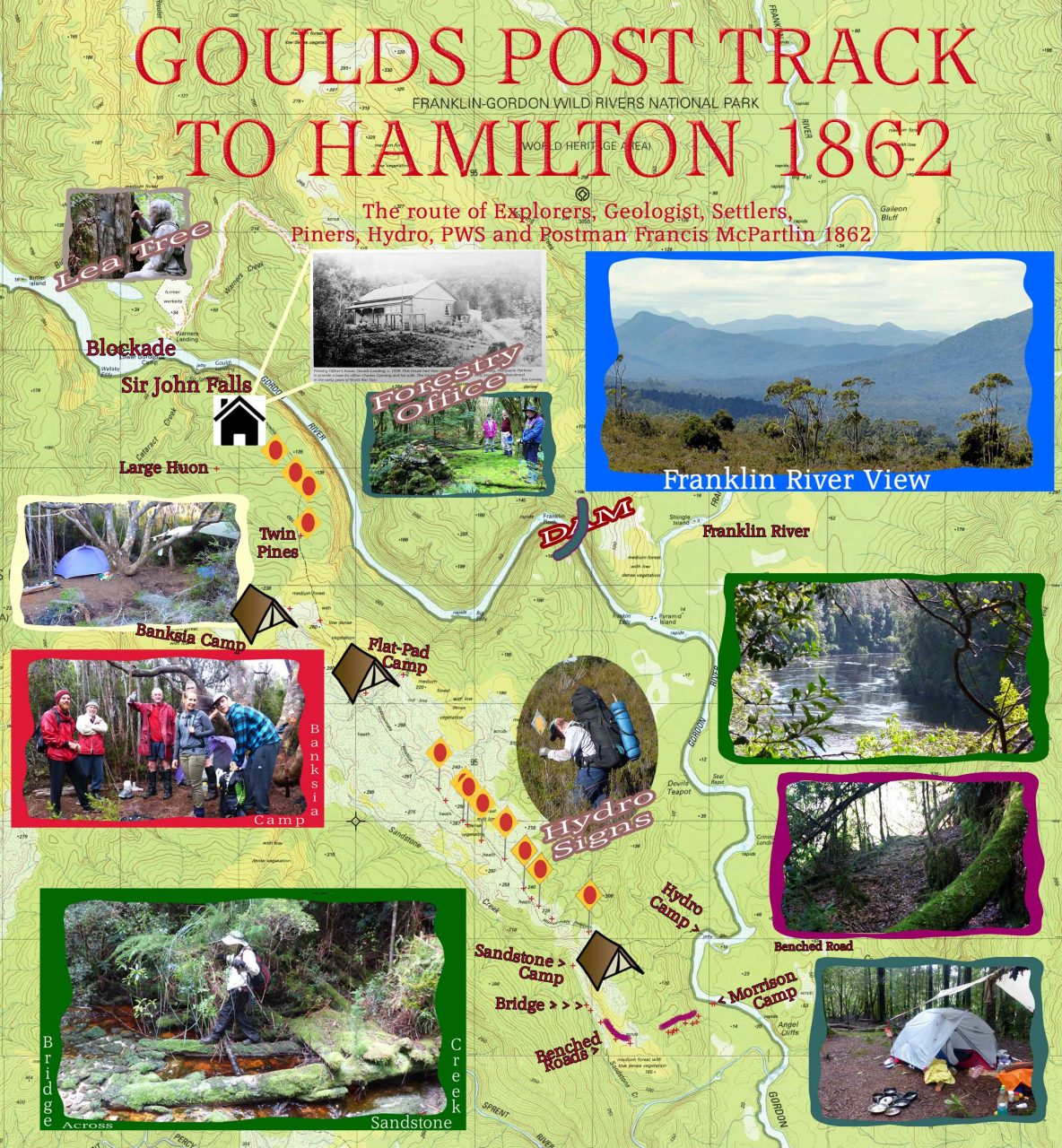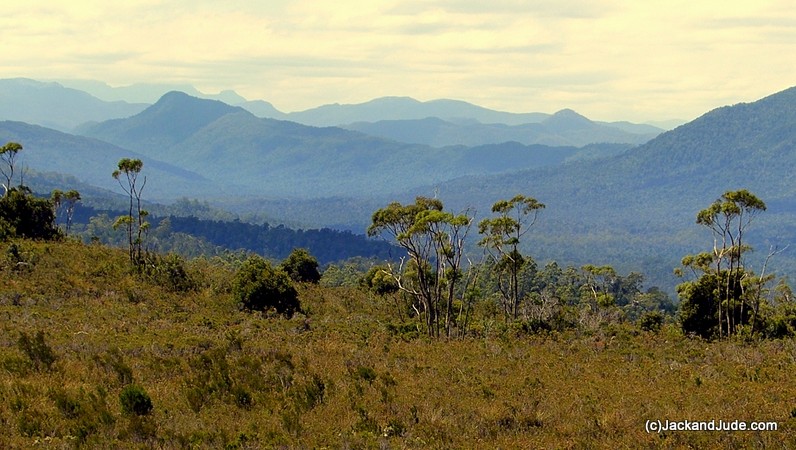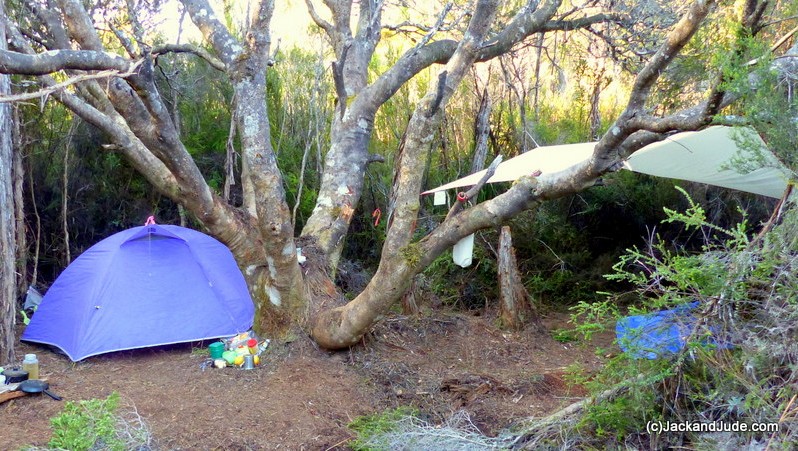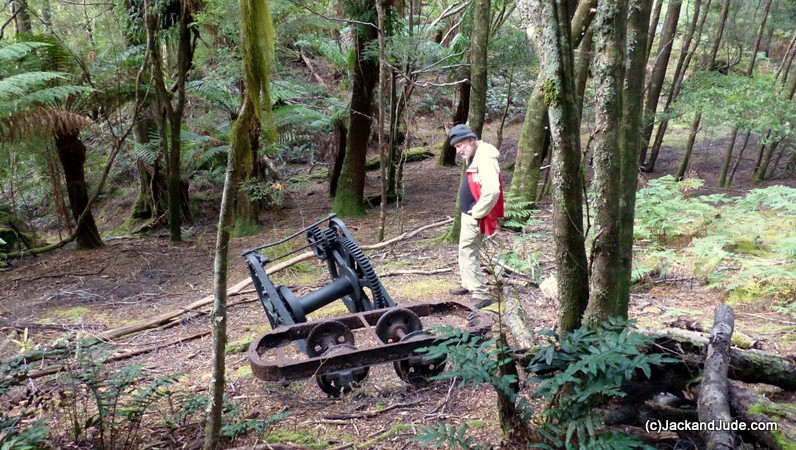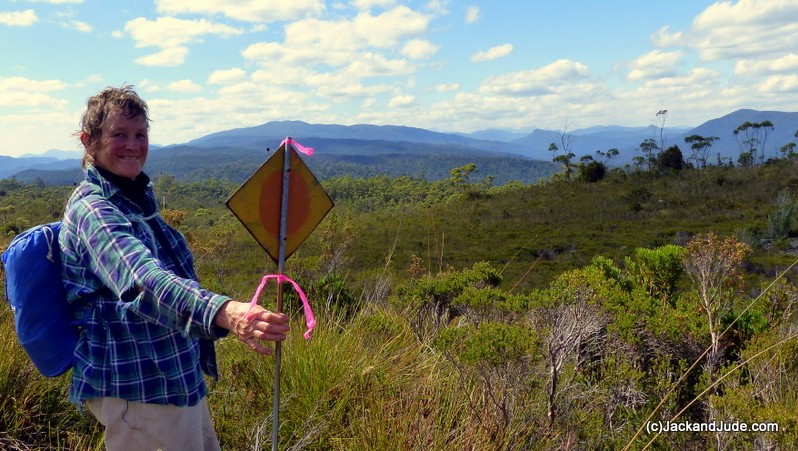Finding Goulds Track
Part 1: Background and History
Part 2: Pain and Pleasure ~ April 2015
Part 3: A Walk in a Park ~ January 2016
Part 4: Bold New Adventure ~ April 2017
Part 5: Baby Steps to Heaven ~ March 2018
Background
This story begins shortly after World War II when a group of fortunate men, passionate about Earth, worked for Tasmanian Hydro, and four times each year they took the tourist boat from Strahan to Sir John Falls. Then over several days, they walked south through what is now The Franklin Gordon Wild Rivers National Park to a Hydro camp on the Gordon River just downstream from the Rocky Sprent. Their job was to measure river flow and river heights.
Walking overland, their journey took them through the full display of Tasmania’s lovely land, from thick wet forests near the river’s edge through regions of drier Manuka and Eucalyptus, and then onto one of those magical phenomena of southern Tasmania, a vast buttongrass plain. This one at the feet of the thickly forested King Billy Range.
History
The track they followed had already been used by many before Hydro. Beginning around the 1930s, and continuing to the 60s, the Piners used this track to haul chafe and supplies to their upper river camps. And before that, many geologist and miners had come west to search for mineral resources. This track was first established in 1862 by a team led by Tasmania’s first Geological Surveyor, Charles Gould (1834-1893) during their search specifically for gold. It was later enhanced by Jim Morrison when he established a pack track from Goulds Landing, near Sir John Falls, to his Sandstone Camp near the Rocky Sprent.
Tasmania, Australia’s second colony, desperately needed resources by the mid-1800s. But attempts to explore Western Tasmania proved a highly dangerous nightmare. Thickly clad mountains and raging rivers blocked access overland, and turbulent seas and one of the world’s most hazardous passages, Hell’s Gate, combined to curtail the colony’s development. This became so desperate that in 1842, Governor Sir John Franklin ordered the young surveyor James Calder to find a path west. In charge of twenty convicts and a dozen soldiers that daunting task took James Calder two years. But the track proved highly weather dependent and twenty years later on, Gould’s men found a much better route linking the west to the east.
Immense Historical Value
The Goulds Post Track to Hamilton gained immense historical value. It’s intrinsic to who we are, and epitomizes the courage and never give up qualities that Australians so much admire and want to pass on to coming generations.
This historical track should be kept open because it travels through a diverse range of geography, and by doing that, illustrates how nature copes with the various conditions of wind, sunlight, rain, terrain, and nutrients.

